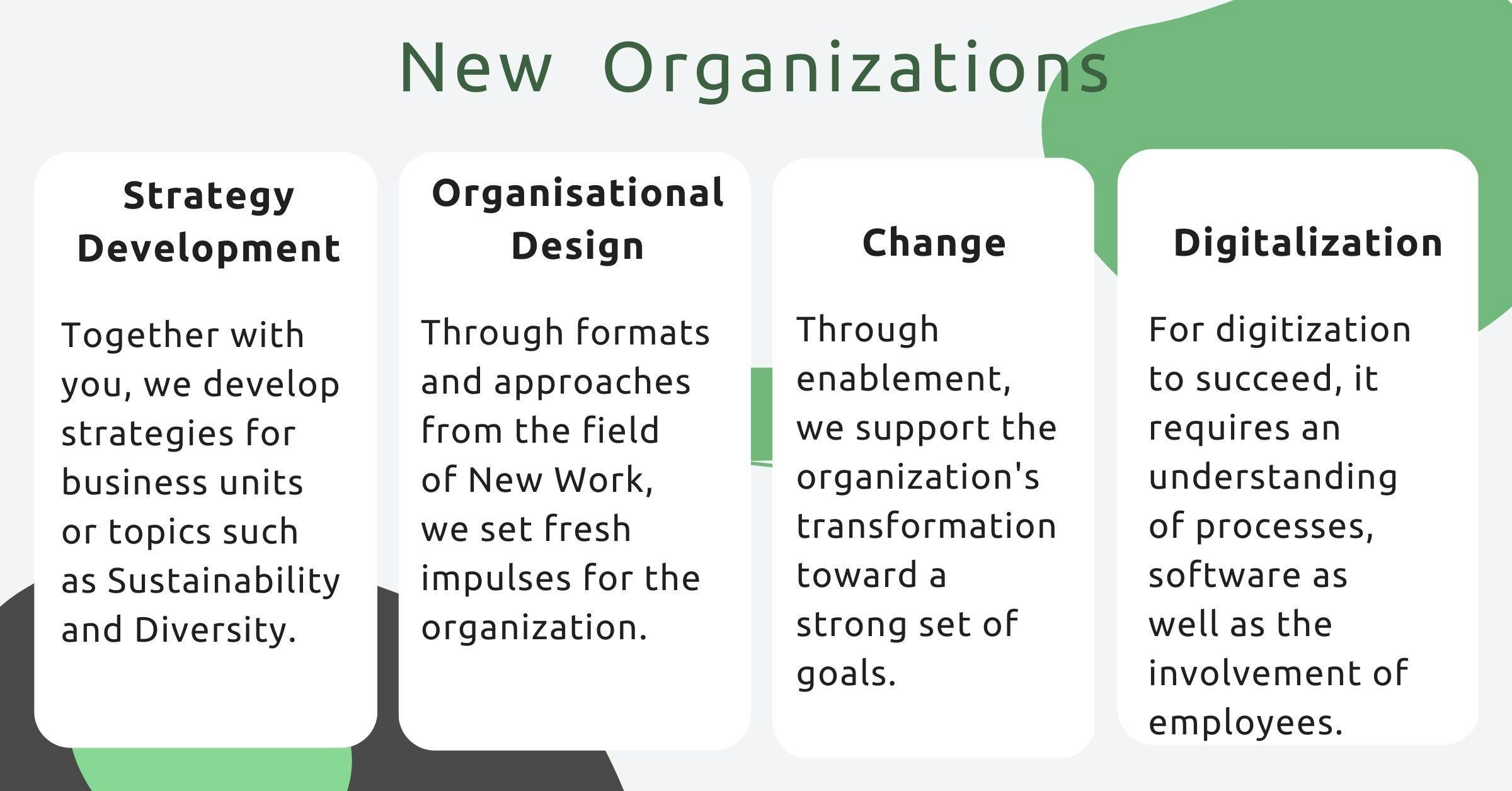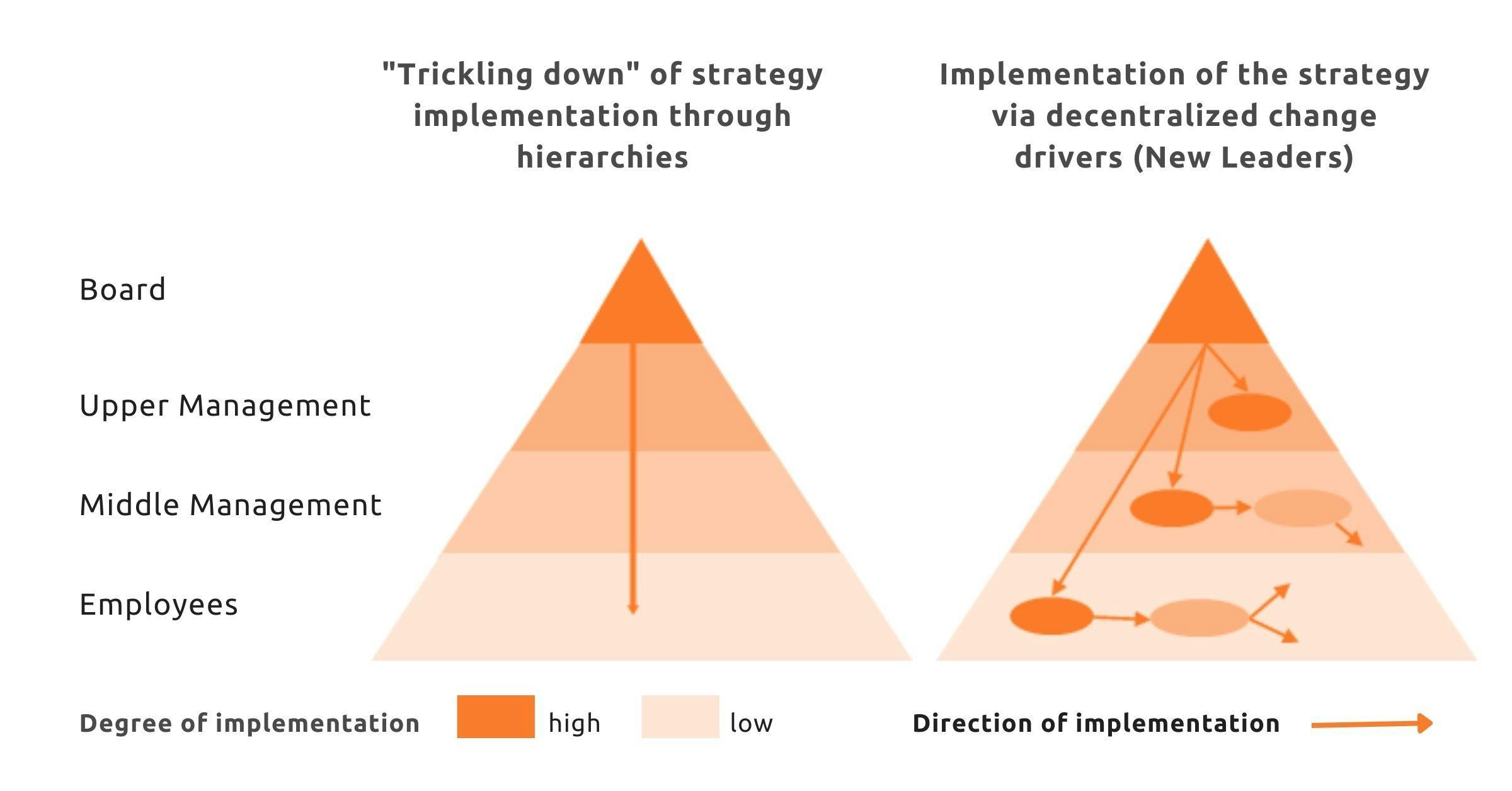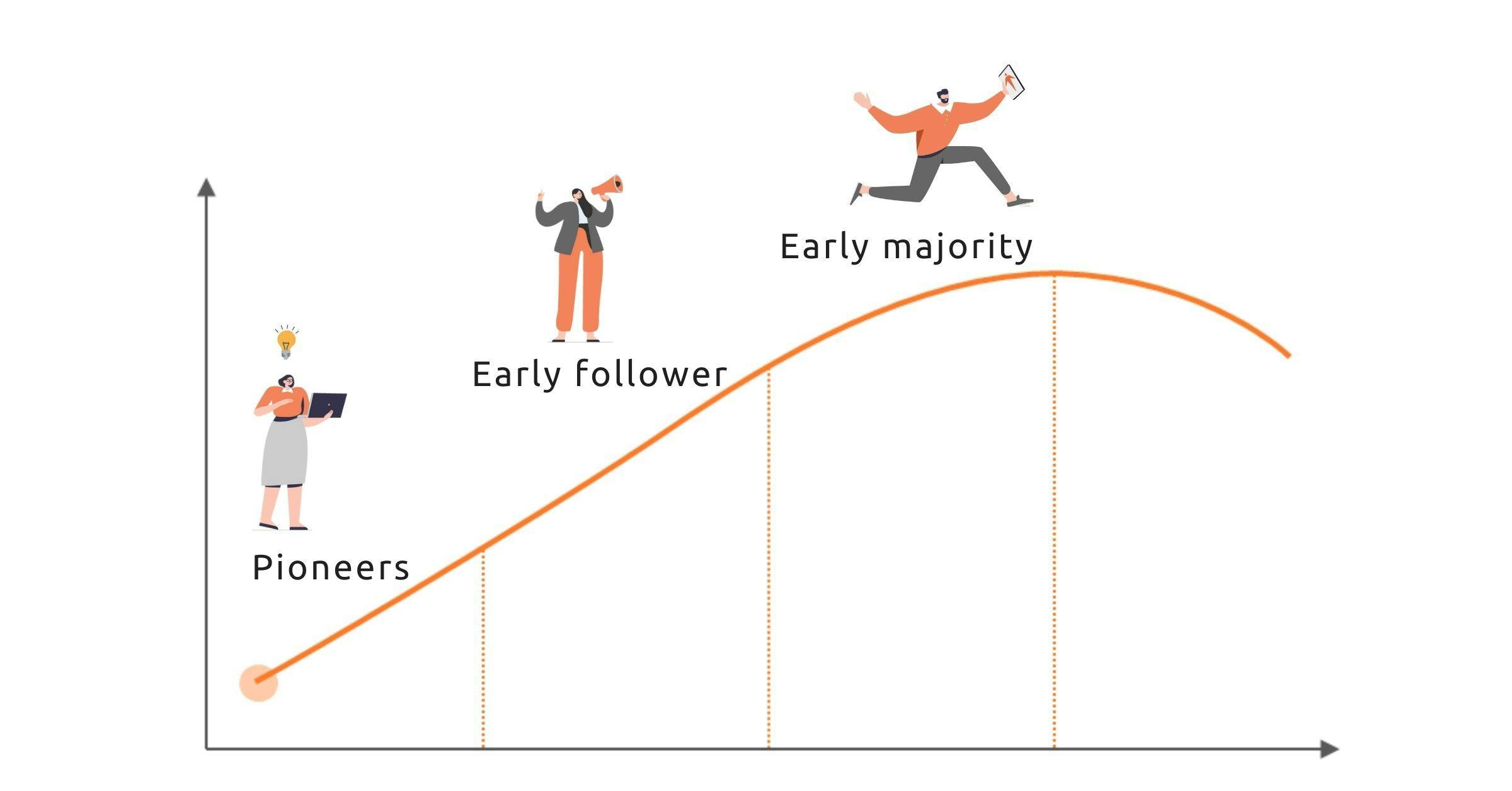Blog
New Organizations
Category:
New Organizations
In organizational development the driving force is to transfer your strategic goals into the everyday practice of the company. We master the classics - from strategy development to organizational design, change, or digitalization.

If it appears to make sense for our customers, we apply our behavior-oriented approaches. These help to make changes scalable within the company.
Here is more background:
The decisive factor for the success of companies is how quickly and effectively they implement strategic goals in their organization. Topics such as innovation, diversity, or sustainability require changes in processes, working methods, and thought patterns. The New Leadership approach uses the essential levers for successful implementation to strengthen the decentralized forces of the organization and turn them into the driving force of change.

Decentralization and social diffusion:
The formal organization of companies largely follows a hierarchical logic, even in the age of New Work. However, this is not necessarily the ideal perspective for successful implementation. An organization is also a social network that contains leverage that can be exploited.
One mechanism is social diffusion. The employees of the organization exchange information about their work processes, projects, or physical encounters in the office. In this exchange, they share information, and there is mutual learning among them. Similar to how a new fashion or a technological innovation spread, so do behavioral patterns infiltrate the organization.
Starting with the pioneers, i.e., the first convinced promoters, the early followers join as the first group. They are enthusiastic and capable. Based on this group, later participants are convinced. A critical mass is reached, which represents the new norm of the organization.

Innovations in the company - strategic projects on topics such as innovation, diversity, or sustainability should also use these effects. They should use convinced and convincing pioneers as mouthpieces and thus influence the organization. These pioneers exist at all hierarchical levels. Even in traditional companies or areas of work, there are always people who fill this role.
Fields of application - New Leaders for change.
The New Leadership approach is all about this. Change drivers are identified, who are characterized by their motivation and commitment in different parts of the organization. These can already be active in management roles concerning change, sustainability, innovation, or diversity but do not explicitly have to be. Through the cAPPabilities Fitness Center for New Leadership, high potentials strengthen themselves while at the same time strengthening their projects. Their behavior represents the ideal image of the organization while their projects implement the strategy.
They become multipliers of the new How (behavior) and What (strategy) in the organization and inspire other people to develop further and advance strategic projects together. The strategy of the company is not implemented top-down but spreads throughout the organization by strengthening the most active drivers of change. Similar to other approaches to the social diffusion of innovation (e.g. product life cycle), the innovation spreads accordingly via target groups such as pioneers, early followers, late followers, etc.
The learning approach of the Fitness Center for New Leadership makes it easier for the participants to strengthen their abilities (future skills), for example in motivation, creativity, cooperation, or communication, and thus advance the change process in the company. A fundamental part of our approach is the app's community features such as practice with training partners, feedback, and sharing of experiences.
Training groups can organize themselves freely depending on skill needs, affinity, and availability. The app thus enables automated self-directed training and the social diffusion of skills for change.
Effects of New Organization
The approach avoids an ineffective and inefficient watering can approach. Instead, the decentralized potential of the organization is used. The ideal company employee, characterized by commitment and drive, is strengthened. These people assume responsibility and leadership in their areas and for their issues. Further development becomes continuous and connected to projects instead of being detached and only pursued selectively. Strategic goals for innovation, sustainability, and diversity do not remain on paper but are broadly reflected in the organization's behavior. Thus, it is possible to achieve the goals associated with these topics, such as generating sales, developing new products, improving image, or retaining employees.